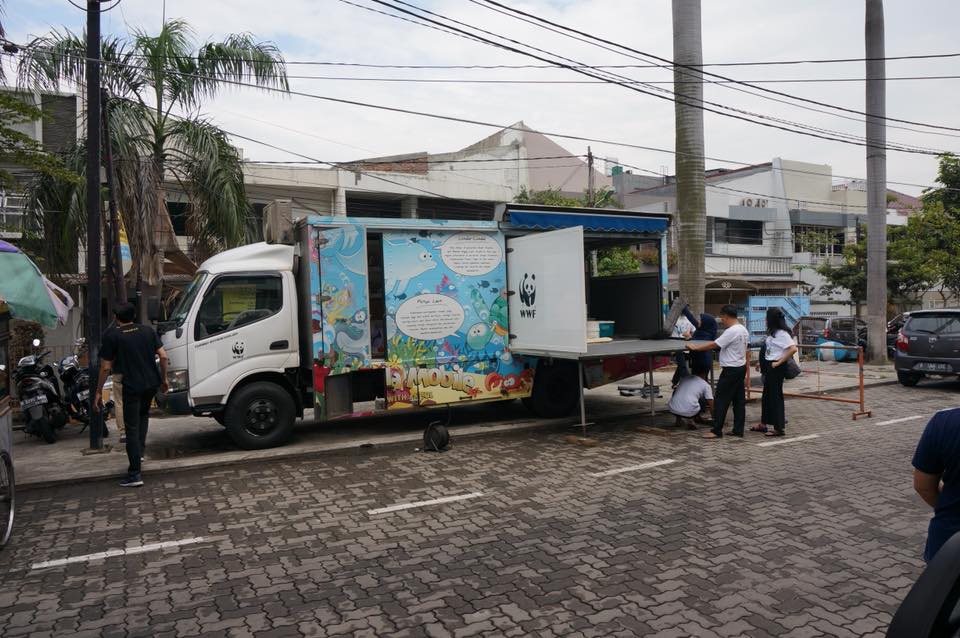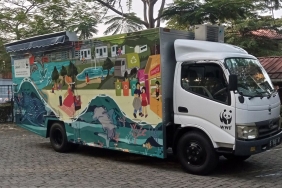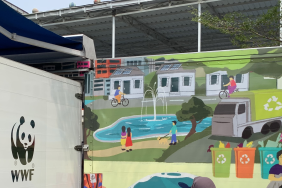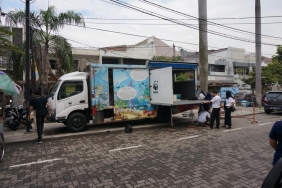LET'S PROTECT CLEAN WATER WITH PANDA MOBILE!
By: Dinda Sora (Volunteer Panda Mobile)
Industrial advancement and human activities are one of the main factors for water quality degradation. The discharge of chemicals, waste, and other pollution into water will affect aquatic ecosystems such as lakes, rivers, oceans, and groundwater, impacting the life of aquatic biota, groundwater quality, and human health. In addition, in most areas, water is the main source of livelihood for the surrounding community, so it is important for the community to know and understand whether the water used is safe from pollutants.
"Water Lab" is one of the facilities of WWF-Indonesia's Panda Mobile which is a place for the community to get education about the existence of water around them that can be consumed or used in everyday life. In addition to testing water quality, this water laboratory is also used to educate school children about the importance of maintaining the existence of clean water sources and being wise in using them. "Currently, there is very little water that is suitable for consumption on Earth. Only about 1% of clean water can be consumed. Maybe it's getting less and less. Therefore, we must all be able to be economical in using clean water," said Dinda, one of WWF-Indonesia's Panda Mobile volunteers to the children who were using the Panda Mobile water laboratory facility.
In this water laboratory, there are two types of simple tests carried out, namely chemically and biologically. Chemical testing of water is seen based on its acidity level using litmus paper and also a pH meter. The pH level (water acidity) has a value range of 0-14. The high and low pH of water is strongly influenced by the content of other minerals contained in the water. Normal water or water that can be consumed and used by humans has a neutral pH, which is around 7. When the water is polluted by a pollutant, the water will have a pH that is not neutral (pH that is less or more than the normal pH). Organisms that live in aquatic areas also live in water that has a pH close to neutral so that when the pH of the water changes, it will interfere with the organisms in the waters.< br />
While in biological testing, water is seen using a microscope. With the help of this tool, we are able to see "bioindicator" objects that have a very small size, with a magnification of 10 times, 40 times, up to 100 times. Bioindicators are organisms that are sensitive to changes in the environment so that they can provide information on whether the water is in good condition or not. For example, when we find stonefly larvae and bagworm larvae, it means that the waters are still in good condition and not polluted because the two bioindicators live in waters that have very good water quality and have not been polluted. There are many other organisms that can be used as bioindicators of water quality
Through these two simple tests, as done during the visit of WWF-Indonesia Mobile Panda at Salman Al-Farisi Elementary School on Tuesday (08/08), school-age children received education about clean water. After knowing about the importance of clean water quality, they can choose and be more aware of the water that will be used or for consumption.
"In my opinion, the mini (water) laboratory in Panda Mobile is very good for children's learning media, because that way we can jointly educate as early as possible about the importance of protecting water and being economical in its use," said Arini, a teacher at SD Salman Al-Farisi Bandung.





